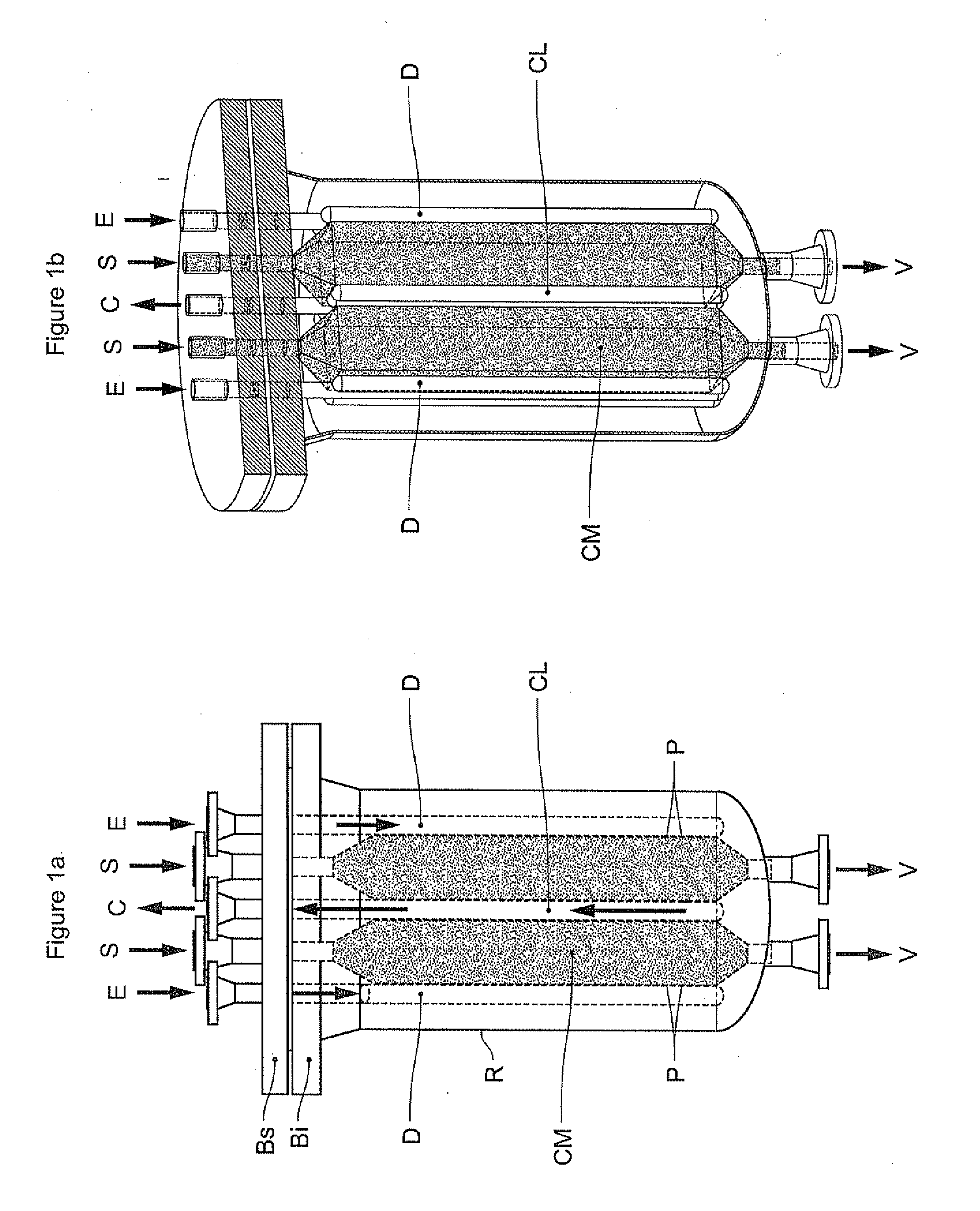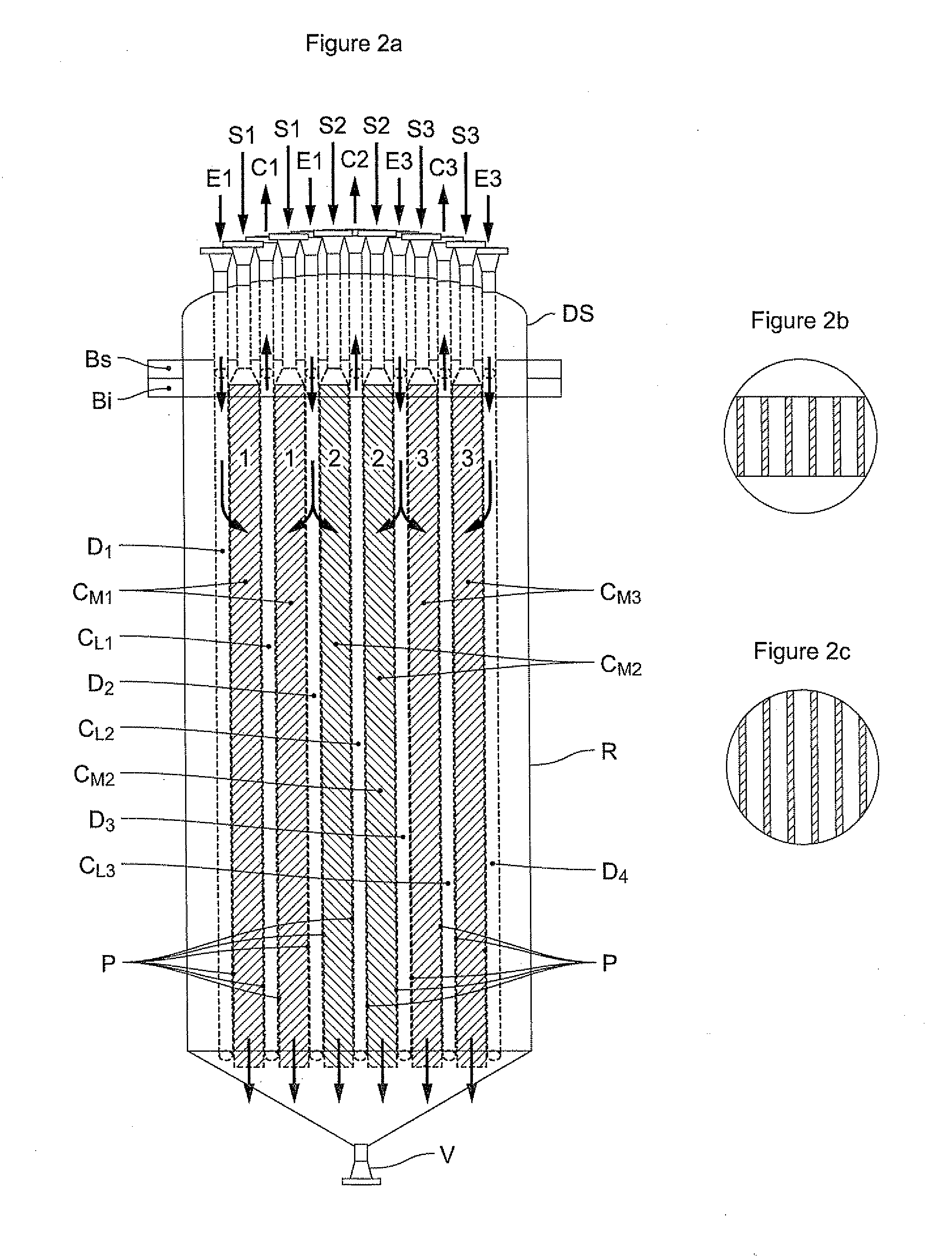Thin layer fixed bed reactor for the chemical treatment of a finely divided catalytic solid
- Summary
- Abstract
- Description
- Claims
- Application Information
AI Technical Summary
Benefits of technology
Problems solved by technology
Method used
Image
Examples
Embodiment Construction
[0091]The description below is made with reference to FIGS. 2a, 2b, 2c corresponding to a planar configuration.
[0092]The present invention consists of a fixed bed reactor with thin layers constituted by an assembly of similar modules M functioning in parallel and enclosed in a common vessel constituting the envelope R of said reactor,
[0093]In the present particular case, the modules are identical.
[0094]This reactor is intended to carry out a treatment on a catalytic solid present in the reactor in the form of fine particles generally with a diameter in the range 30 to 100 microns.
[0095]This treatment, which the skilled person generally terms reduction, uses a reagent gas which is hydrogen, optionally diluted with an inert gas, generally nitrogen, in any dilution but preferably being between 25% to 35% by volume. Each module M of the reactor is constituted by an assembly comprising:[0096]at least one partially porous envelope P enclosing each thin layer CM of particles to be treated ...
PUM
| Property | Measurement | Unit |
|---|---|---|
| Temperature | aaaaa | aaaaa |
| Temperature | aaaaa | aaaaa |
| Temperature | aaaaa | aaaaa |
Abstract
Description
Claims
Application Information
 Login to View More
Login to View More - R&D Engineer
- R&D Manager
- IP Professional
- Industry Leading Data Capabilities
- Powerful AI technology
- Patent DNA Extraction
Browse by: Latest US Patents, China's latest patents, Technical Efficacy Thesaurus, Application Domain, Technology Topic, Popular Technical Reports.
© 2024 PatSnap. All rights reserved.Legal|Privacy policy|Modern Slavery Act Transparency Statement|Sitemap|About US| Contact US: help@patsnap.com










